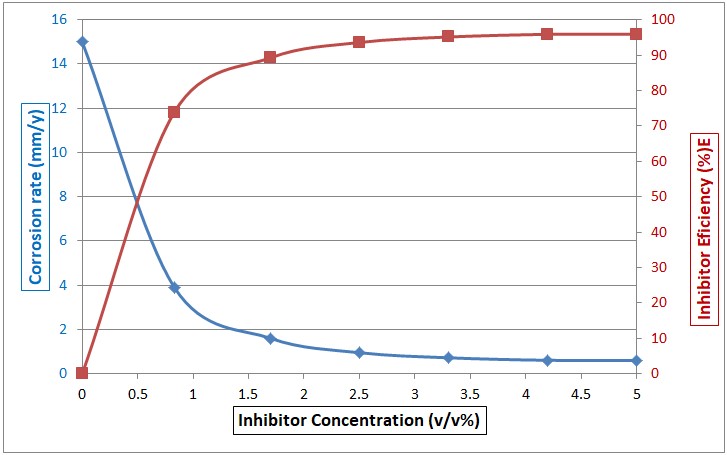Inhibitor Dose Detemination to Mitigate Corrosion
Determining the minimum inhibitor dosage required to mitigate corrosion is critical to protect metals and alloys and aligned to maintenance cycles to minimise cost.
The desired inhibitor concentration depends on the aggressiveness of the environment, type of metal and type of inhibitor. More often than not experimental testing is required to determine the necessary concentration for each case. Adding more than the required concentration usually does not improve the performance significantly; it only increases the cost of the treatment.
LPD Lab Services can perform electrochemical corrosion testing, using a potentiostat, to determine the corrosion rate in a number of different concentrations. The corrosion rate is then plotted versus the concentration to aid visual assessment of the effect of the inhibitor as a function of its concentration.
 From the graph in this example it is seen that little additional benefit is obtained by increasing the inhibitor concentration above 3.5 %. It may be decided, for that reason, to control the dosing level at 3.5 %. Optimum cost considerations may dictate that a relatively inexpensive part only needs to last from one yearly overhaul to another and a maximum corrosion rate of 1.0 mm/year is satisfactory. In that case the dosing level could be controlled at 1.4 %.
From the graph in this example it is seen that little additional benefit is obtained by increasing the inhibitor concentration above 3.5 %. It may be decided, for that reason, to control the dosing level at 3.5 %. Optimum cost considerations may dictate that a relatively inexpensive part only needs to last from one yearly overhaul to another and a maximum corrosion rate of 1.0 mm/year is satisfactory. In that case the dosing level could be controlled at 1.4 %.

